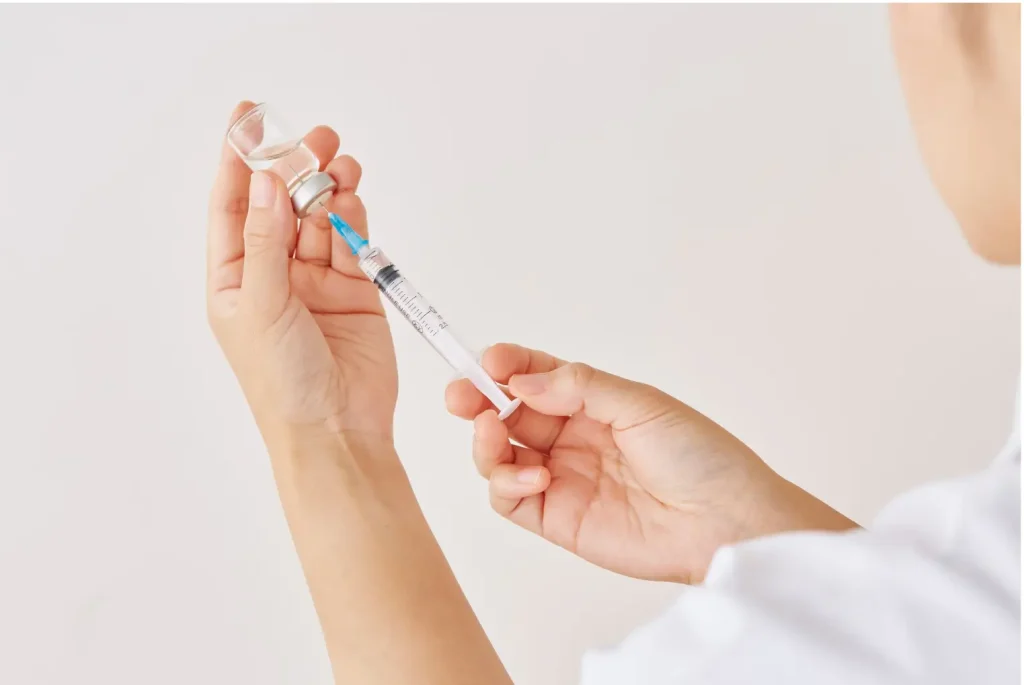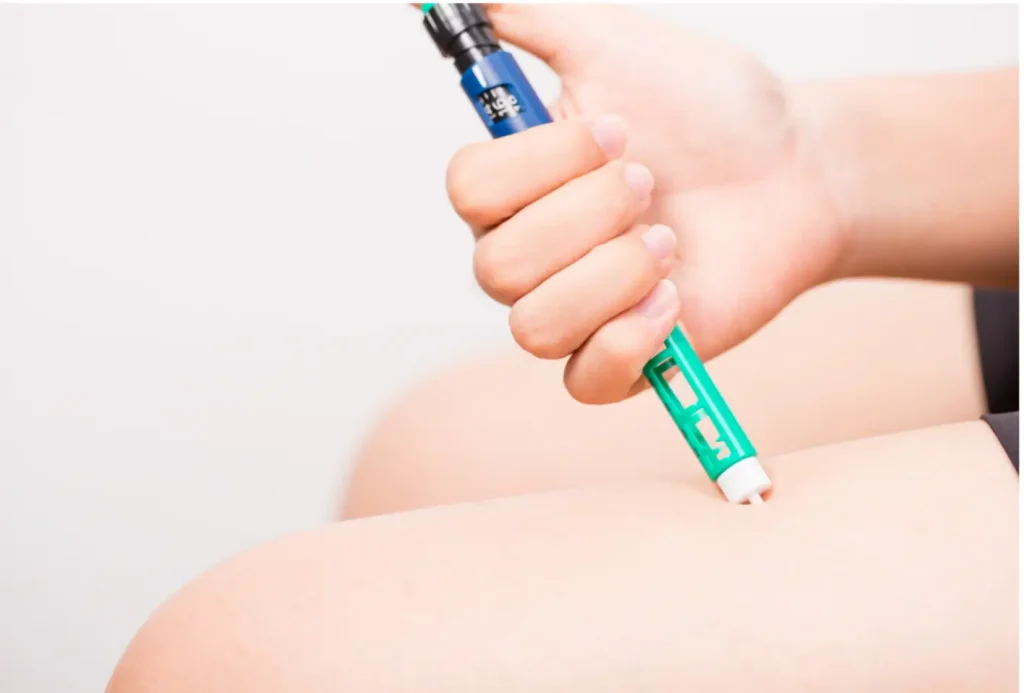A global survey of over 6,000 patients with wet age-related macular degeneration (AMD) has revealed significant challenges in managing the condition, affecting both vision outcomes and overall quality of life. As treatment options continue to evolve, newer therapies aim to reduce the frequency of injections while maintaining effectiveness.
Among the top treatments available for AMD, Vabysmo and Avastin stand out as key contenders. Vabysmo, specifically designed for retinal diseases, offers a dual-action approach, while Avastin, initially developed for cancer, is widely used off-label for AMD.
Understanding the differences in efficacy, safety, and accessibility between these two medications is crucial for both patients and healthcare providers. In this article, we will dive into the key distinctions between Vabysmo vs Avastin, exploring their mechanisms, benefits, and potential drawbacks to help you make an informed treatment decision.
Key Takeaways
- Vabysmo is a dual-target treatment that inhibits both VEGF-A and Ang-2, providing enhanced retinal stability and reducing the frequency of injections, with dosing intervals of up to 16 weeks after the initial phase.
- Avastin is a monoclonal antibody that targets VEGF-A, reducing retinal leakage and abnormal blood vessel growth; however, it requires more frequent injections due to its shorter duration of action.
- Vabysmo is FDA-approved for wet AMD and DME, whereas Avastin is used off-label for these conditions, despite its widespread use in ophthalmology.
- Vabysmo’s extended dosing regimen offers a patient-friendly approach, reducing the treatment burden and making it more convenient for long-term management of retinal diseases.
- Avastin offers a cost-effective option, making it accessible for patients with limited insurance coverage, although its frequent injections may be more burdensome for some individuals.
- Both treatments have similar efficacy in managing vision loss and retinal fluid, but Vabysmo’s dual inhibition may provide longer-lasting benefits and improved treatment outcomes for some patients.
About: Medical Spa RX provides medical practices with premium products at the best prices. If you’re looking to buy Vabysmo online for your practice, the sales representatives at Medical Spa RX can give you guidance.
Mechanism of Action: Bispecific vs Monoclonal Antibody
Vabysmo and Avastin differ significantly in their mechanisms of action, each targeting critical pathways involved in retinal diseases.
- Avastin: A monoclonal antibody that blocks vascular endothelial growth factor A (VEGF-A). VEGF-A is responsible for abnormal blood vessel growth and leakage in retinal diseases such as wet AMD and diabetic macular edema (DME). By inhibiting this protein, Avastin helps reduce fluid buildup in the retina and slows vision loss.
- Vabysmo: A bispecific antibody, meaning it targets VEGF-A and angiopoietin-2 (Ang-2). By addressing both VEGF-A and Ang-2, Vabysmo offers a more comprehensive approach to retinal disease, stabilizing blood vessels, reducing leakage, and providing longer-lasting effects. This dual inhibition allows for better vascular stability and potentially more sustained vision improvements.
The key difference in their action lies in Vabysmo’s dual-target approach, which may lead to fewer injections, making it more convenient for patients in the long term compared to Avastin.
FDA Approval Status: Vabysmo vs Avastin in Ophthalmology
While both Vabysmo and Avastin are used in ophthalmology to treat retinal diseases, their FDA approval status differs significantly, which has implications for their use in clinical settings.
- Vabysmo (faricimab-svoa) is FDA-approved for neovascular (wet) age-related macular degeneration (nAMD) and diabetic macular edema (DME). This approval ensures that the medication has undergone rigorous clinical trials demonstrating its safety and efficacy in treating these conditions.
- Avastin (bevacizumab), originally approved for cancer treatment, is widely used off-label for wet AMD and DME. Despite its widespread use in retinal care, it has not been FDA-approved for ophthalmic use. However, many ophthalmologists prescribe it due to its cost-effectiveness compared to other anti-VEGF therapies.
For patients and healthcare providers, understanding the FDA approval status is crucial in making informed treatment decisions and considering regulatory implications when using these medications.
Efficacy, Durability, and Injection Frequency Compared
When comparing Vabysmo and Avastin, one of the most important factors to consider is the efficacy and injection frequency of each treatment, as these directly affect patient adherence and long-term outcomes.

Vabysmo has demonstrated strong efficacy in maintaining or improving vision, with a dual-target mechanism (VEGF-A and Ang-2) that allows for extended treatment intervals. After the initial loading phase, patients can transition to injections every 12 to 16 weeks, significantly reducing the injection burden and patient visits. The longer dosing intervals also make Vabysmo dosing more convenient, offering patients a better quality of life with fewer injections.
Avastin, while still effective, requires more frequent injections, typically every 4 weeks for most patients, resulting in a higher treatment burden. The shorter duration of action of Avastin means that patients may need more frequent visits, contributing to higher cumulative injection numbers over time.
These differences in injection frequency and dosing flexibility make Vabysmo a more patient-friendly option for long-term management, particularly in cases where reducing the frequency of injections is a priority.
Safety, Compounding, and Cost Considerations
Safety, compounding, and cost are crucial factors in choosing between Vabysmo and Avastin. These aspects can significantly influence treatment outcomes, accessibility, and overall patient experience.

Vabysmo provides dual inhibition of VEGF-A and Ang-2, which helps improve retinal stability and treatment outcomes. Vabysmo dosing comes in a pre-filled syringe, eliminating the need for compounding and reducing the risk of contamination or dose inconsistencies. However, the higher cost of Vabysmo makes insurance coverage and out-of-pocket expenses essential considerations for patients.
Avastin, while effective, must be compounded by pharmacies before use, which can introduce sterility risks and potential variability in dosing. Despite these concerns, Avastin remains an affordable option, with a significantly lower cost per dose, making it a practical choice for cost-sensitive or uninsured patients. However, its off-label use for retinal diseases requires careful physician oversight to manage safety and efficacy.
The choice between Vabysmo and Avastin depends not only on efficacy but also on cost considerations, treatment preferences, and patient needs.
Conclusion
The decision between Vabysmo and Avastin depends on several key factors, including efficacy, dosing flexibility, cost, and patient preferences.
Vabysmo, with its dual inhibition of VEGF-A and Ang-2, offers extended dosing intervals, which makes it a more patient-friendly treatment option for managing wet AMD and DME over the long term. This extended dosing regimen can significantly reduce the frequency of injections, improving patient convenience and overall quality of life.
On the other hand, Avastin, though effective, requires more frequent injections due to its shorter duration of action. It remains a cost-efficient option, especially for patients with limited insurance coverage or those who need a more affordable solution. While Avastin is commonly used off-label for retinal diseases, it is still a reliable and widely used treatment in ophthalmology.
Ultimately, the best choice between these two treatments should be based on individual patient needs, including disease severity, treatment goals, and financial considerations. Consulting with a healthcare provider is essential to ensure that the selected therapy is aligned with the patient’s specific needs for vision preservation and effective disease management.
FAQs
1. What does Vabysmo do?
Vabysmo can treat wet age-related macular degeneration (AMD) and diabetic macular edema (DME). It helps reduce retinal fluid and improve vision.
2. How does Vabysmo differ from other treatments?
Vabysmo is the first bispecific antibody for the eye. Unlike others, it targets both VEGF-A and Ang-2.
3. How often do practitioners inject Vabysmo?
After initial loading doses, many patients get the procedure every 12 to 16 weeks. The schedule depends on their disease response.
4. Does insurance cover Vabysmo?
Many insurance plans cover Vabysmo, but coverage can vary. Patients should consult their healthcare provider or contact the manufacturer’s support programs for assistance.
5. What are the side effects of Vabysmo?
The most common side effects after injection include eye redness, irritation, and mild discomfort. Serious risks like infection are rare.
6. Can Vabysmo be used in both eyes?
Yes, but typically not on the same day. The healthcare practitioner evaluates each eye separately to determine the correct treatment interval and response.
7. How soon can I expect results from Vabysmo?
Some patients notice vision improvement within weeks, but results vary. Your retina specialist will track progress over time.
References
Global Survey of Patients with Wet AMD Reveals Challenges, Burdens for Patients. Review of Optometry. Published January 9, 2025. https://www.reviewofoptometry.com/article/global-survey-of-patients-with-wet-amd-reveals-challenges-burdens-for-patients
Moore J. Vabysmo Shows Advantages Over Aflibercept in Wet AMD and Diabetic Macular Edema. Patient Worthy. Published May 31, 2023. https://patientworthy.com/2023/05/31/vabysmo-advantages-aflibercept-wet-amd-diabetic-macular-edema/





















